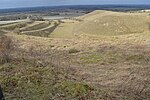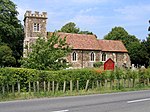Shillington, Bedfordshire
Bedfordshire folkloreCentral Bedfordshire DistrictCivil parishes in BedfordshireUse British English from July 2016Villages in Bedfordshire

Shillington is a village and civil parish in Bedfordshire, England. In the south of the parish the hamlet of Pegsdon includes the Pegsdon hills nature reserve and is a salient of the county into Hertfordshire. Since 1985 its administration has included the village of Higham Gobion, south-west on the minor road leading to the main north–south road in the district, the A6. It has a population of 1,831 and is centred midway between stopping services railway stations on the Midland Main Line and East Coast Main Line 6 miles (9.7 km) away. Farmland and hedgerows forms 95% of the land use and to the south and north of the boundaries is intermittent woodland.
Excerpt from the Wikipedia article Shillington, Bedfordshire (License: CC BY-SA 3.0, Authors, Images).Shillington, Bedfordshire
Church Street,
Geographical coordinates (GPS) Address Nearby Places Show on map
Geographical coordinates (GPS)
| Latitude | Longitude |
|---|---|
| N 51.993205 ° | E -0.362063 ° |
Address
Church Street
Church Street
SG5 3LJ
England, United Kingdom
Open on Google Maps









